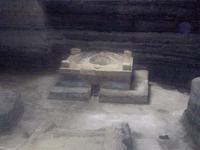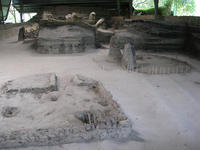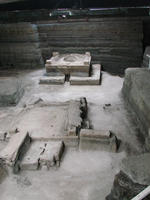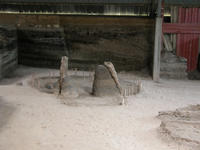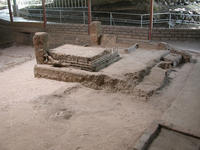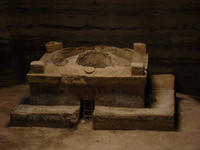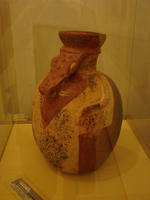You are in: Central America -> El Salvador -> Joya de Ceren Archae... , and traditional search or Image Gallery will yield results of this site only
Joya de Ceren Archaeological Site
| Site number: | 675 |
|
| Type of site: | Cultural | |
| Date: | 900 BC | |
| Date of Inscription: | 1993 | |
| Location: | Central America, El Salvador, La Libertad, Canton Joya de Ceren, Jurisdic.San Juan Opico | |
Up to 75 images are shown here. Click on each for more details or on Image Gallery for more images.
| Description: | Joya de Cerén was a pre-Hispanic rural settlement that, similarly to Pompeii and Herculaneum in Italy, was buried underneath a volcanic eruption that occurred in c. A.D. 600. The remains, having remained in an exceptional condition, perfectly illustrate the way of life for the Central American populations who worked the lands at that time. --WHMNet paraphrase from the description at WHC Site, where additional information is available. | |
| Joya de Cerén (Jewel of Cerén in the Spanish language) is an archaeological site in El Salvador featuring a pre-Columbian Maya farming village preserved remarkably intact under layers of volcanic ash. It is often referred to as the "Pompeii of the Americas" in comparison to the famous Ancient Roman ruins. A small farming community inhabited as early as 900 BC, Cerén was on the southeast edge of the Maya cultural area. Cerén was evacuated in AD 250 due to the eruption of the Ilopango volcano but was repopulated no earlier than the year 400 and was, at the time of its final evacuation, a tributary to nearby San Andrés. Around the year 590, Loma Caldera, another nearby volcano, erupted and buried the village under 14 layers of ash. The villagers were apparently able to flee in time – no bodies have been found – although they left behind utensils, ceramics, furniture, and even half-eaten food in their haste to escape. The site was discovered in 1976 by Payson Sheets, a professor of anthropology at the University of Colorado at Boulder. Since then the excavation process has continued. About 70 buildings have been uncovered. Even more important than the buildings, however, are the paleoethnobotanical remains. The low temperature of the wet ash from Loma Caldera, as well as its rapid fall, ensured the preservation of much of the plant material. Of great importance is the discovery of manioc fields, the first time manioc cultivation had been found at a New World archaeological site. Although the manioc had long since decomposed, researchers created plaster casts by filling the resulting hollows in the ash. The farmers had planted the manioc "just hours" before the eruption. Cerén was declared a UNESCO World Heritage Site in 1993. --Wikipedia. Text is available under the Creative Commons Attribution-ShareAlike License. | ||
| Source: | http://whc.unesco.org/en/list/675 | |
| Reference: | 1. UNESCO World Heritage Center, Site Page. | |






